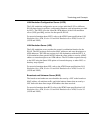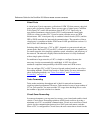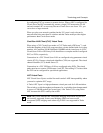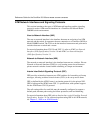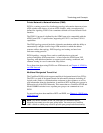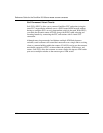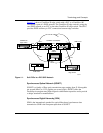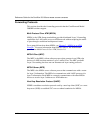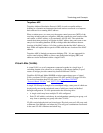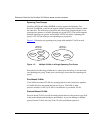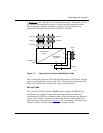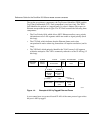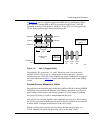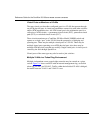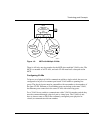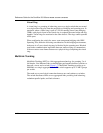
Terminology and Concepts
893-01006-C
1-11
Targetless ARP
Targetless Address Resolution Protocol (ARP) is used to expedite address
learning in a dynamic environment where end stations are moved on a frequent
basis and seen as a roaming MAC address.
When a station moves to a new port, the master control processor (MCP) of the
receiving switch broadcasts a targetless ARP that contains the new location of the
end station, or MAC address, to its emulated LAN (ELAN). The switch that
owned the station previously will delete its MAC address entry and create a new
entry in its forwarding database (FDB) or bridge table that indicates the new
location of the MAC address. All of the switches that had the MAC address in
their FDBs will update their respective FDBs with the new location of the MAC
address.
Targetless ARP is limited to transparent bridging (TB). It is not supported for
source route bridging (SRB) or source route transparent bridging (SRT) and
addresses station movement within a single ELAN.
Virtual LANs (VLANs)
A virtual LAN is a set of components connected together in a single layer 2
switching domain (also referred to as a bridging or broadcast domain). Layer 3
routers or bridges provide connectivity between different VLANs.
Centillion 50/100 and Model 5000BH switches
support three types of virtual
LANs: port-based VLANs, protocol-based VLANs, and 802.1q tagged VLANs.
For more information about VLAN types, see “Port-Based VLANs,”
“Protocol-Based VLANs
,” and “802.1q VLANs.”
A single VLAN may be thought of as a multiport bridge, some ports of which can
be physically seen on the switch and some of which are virtual and defined
through configuration. VLANs operate under the following rules:
• A single switch may have multiple VLANs configured.
• Each VLAN within a switch may be an independent spanning tree group, or it
may share a spanning tree group with other VLANs.
VLANs can include physical and virtual ports. Physical ports are LAN ports such
as Ethernet, Fast Ethernet, and token ring. The only port combination not allowed
in the same VLAN is Ethernet and token ring.



